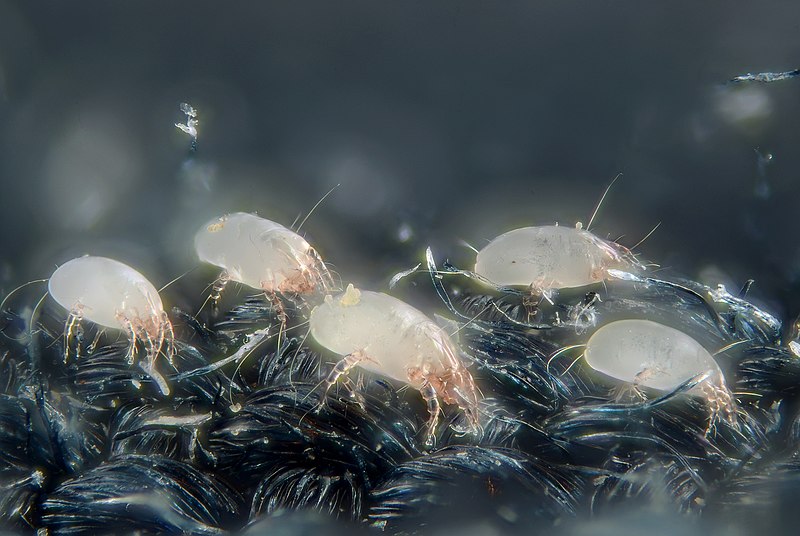Everything you need to know about winter allergies and the ways to beat them
Winter allergies can be incredibly tiring. They result in a variety of unpleasant symptoms, such as a runny nose, sore throat, or constant sneezing. The causes of winter allergy can be anything from outdoor pollens to indoor dust mites.
Of these, dust mites are the bigger culprit. Why? Because they are primarily found on our bedding, which is where we spend 40-50% of our time sleeping. Medication can obviously help, but it is always best to minimize your exposure to dust mites by allergy-proofing your bedroom and bedding.
In this post, we will look into the different ways to achieve that, with the main focus on the usage of hypoallergenic or allergy-proof bedding. But first, let us understand how dust mites result in winter allergies.
How do dust mites result in winter allergies?

Dust mites are innocuous creatures that are part and parcel of human life. They are invisible to the naked eye and thrive in warm and humid conditions. You can find millions of dust mites, their feces, and decaying parts in your bedroom. They fill up your mattress, pillows, and comforters and particularly like your dry winter skin cells.
Whenever you move around in your bed, these allergens get disturbed and become airborne. They are then inhaled by you. If you are someone suffering from asthma or COPD, this can result in coughing and sneezing throughout the night. The following day, you will end up waking with puffy eyes, a runny nose, and chest congestion, all of which can take a toll on your physical and mental health.
Why is it better to prevent winter allergies than treat them?

This is a common question that most people have. After all, why bother till you actually don’t get them? Also, it is similar to the common cold we all get, which can be easily treated by OTC medicines. This is a huge mistake that most people make.
For starters, winter allergies are different from common colds. Even though both share very similar symptoms, the common cold is a viral infection, while winter allergies are your body’s response to an irritant or trigger.
Colds usually do not last more than a couple of weeks, while allergies last till the allergens are actually present. This makes it important to solve the root cause of winter allergies rather than treat them.
Secondly, treating allergies using OTC medicines is more difficult than you think. Some of the drugs used have plenty of side effects, which can cause more harm than good. For instance, many medicines contain decongestants that can raise the patient's heart rate. Some others can cause body tissues to dry out and promote urinary retention.
Long story short, prevention is always better than cure when it comes to winter allergies.
Thankfully, there are certain steps that you can take to eliminate the root cause of winter allergies, aka dust mites, in your home. This way, you can eradicate the chances of anyone getting winter allergies at your home. Let us look at those steps now.
How to prevent winter allergies by transforming your bedding?
The following are some of the useful ways involving your bedding to make your bedroom winter-allergy-free:
1. Deep clean your sheets and pillow covers every week
2. Use allergy-free mattress covers
Allergy-free or dust mite-proof bedding can drastically reduce your symptoms by preventing dust mites from reproducing. These beddings are usually made of materials like cotton, wool, microfiber, and bamboo, all of which have moisture-absorbing and antimicrobial properties.
This characteristic makes it naturally resistant to dust mites. These beddings also have a higher thread count as tightly-woven fabric structures eliminate gaps where dust mites can thrive.
Some allergists even suggest using silk as your bedding fabric. Silk not only fights off allergens but also soothes your skin. However, silk beddings are quite expensive and usually out of budget for most homes, hotels, and hospitals.
And this is where our AllergyCare™ Allergen Barrier Bedding Collection scores. Not only is it highly affordable, but it is also extremely effective in keeping allergens at bay. It prevents allergens from becoming airborne because it has been carefully woven to create a pore size smaller than 4.9 microns, enough to prevent allergens from passing through from the bed to your lungs.
Here are two more reasons to use hypoallergenic mattress encasement:
- It completely covers your mattress, thereby keeping the dust mites away from their food source (your dead skin cells). Without food, they will starve to death.
- It keeps the mattress clean. We all sweat, and our skin releases a lot of oil, all of which soak into the mattress. Putting a cover will ensure that your mattress doesn’t come in contact with sweat or oil, thus keeping it clean. Washing and replacing a cover is also a lot cheaper than replacing a mattress.
3. Apply allergy-proof zippered pillow protectors
Tips to protect yourself from winter allergies
1. Completely declutter your space

2. Vacuum regularly
3. Keep the environment dry and cool




Leave a comment